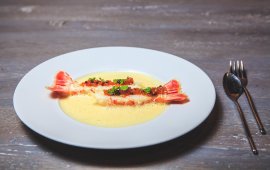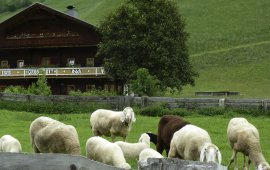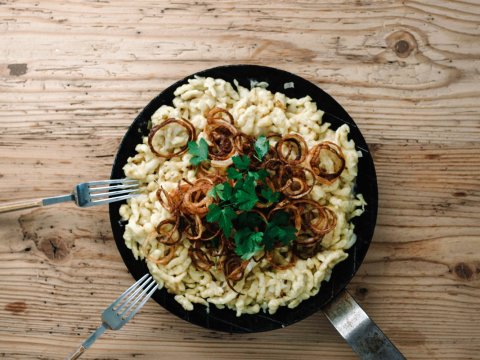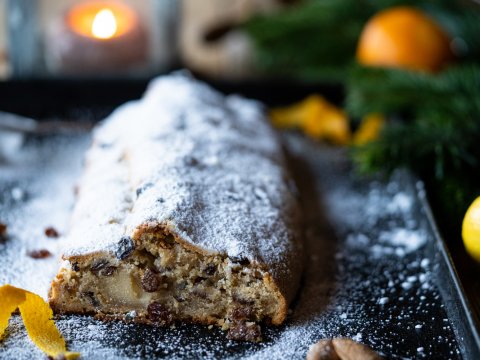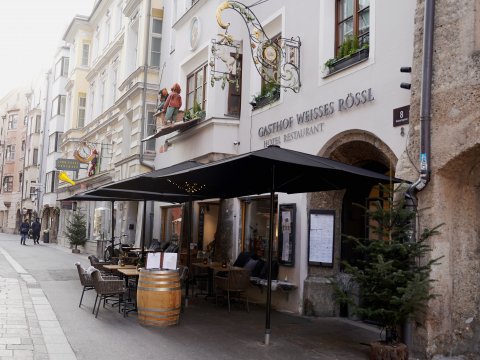Kitzbühel versus Ischgl
When it comes to food, Tirol has two big players: Ischgl and Kitzbühel. But which of these two culinary giants is better? We travelled to the east and west of Tirol to compare and contrast. It's a tough job, but someone has to do it!


A black sphere sliced in two, bright orange and deep purple carrots layered around fluffy pillows of dough like a carefully prepared campfire. A waiter pours a steaming golden liquid from a silver jug. The carrots are flooded, the carpaccio at the bottom loses its reddish hue, rolls of chives emerge from the depths to the surface. An intense smell of beef rises from the plate in front of me: consommé double with parmesan and pea fritters.
It is Bernhard Hochkogler's interpretation of beef soup – and part of a six-course menu we are served on a summer evening at the Stubn 1972 in the Hotel Minglers Sportalm in Kirchberg near Kitzbühel. Tomorrow there will be something different on the menu. And the next day. And the next day. Head chef Hochkogler uses what is fresh and seasonal at the market mixed with what what he still has left in his litttle chamber of wonders.
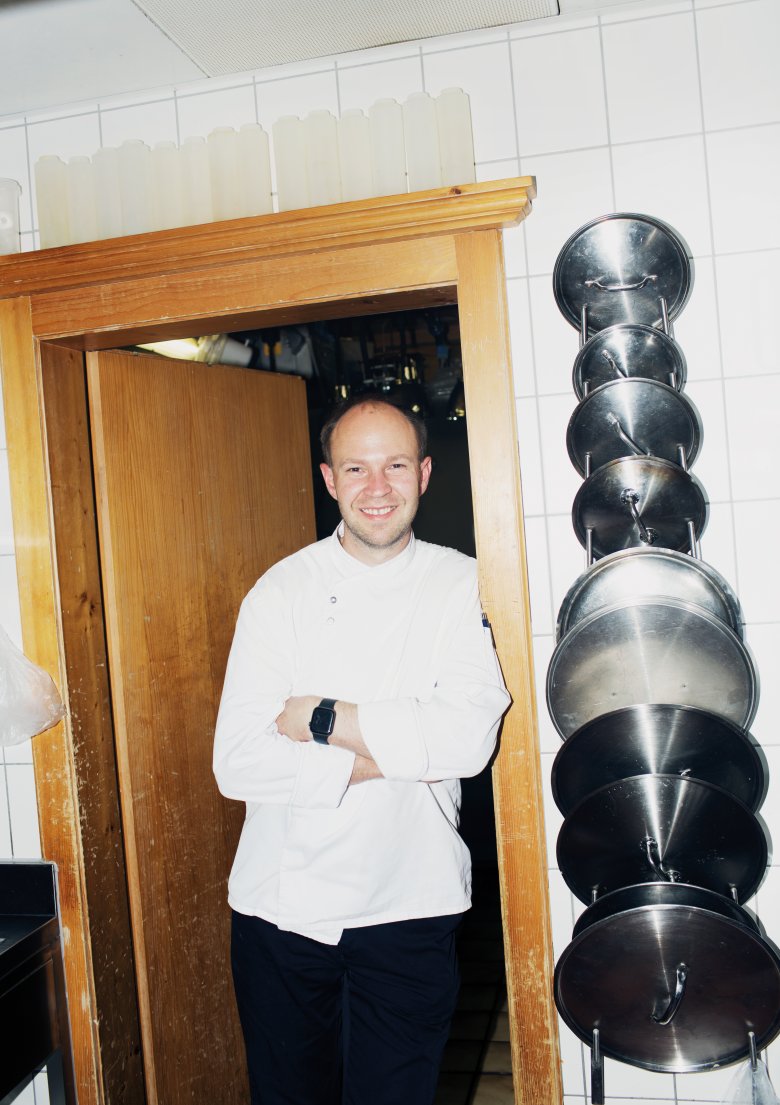
Stubn 72 | Bernhard Hochkogler
Tasting menu with Austrian roots, different each day. Winner of our category Best Old Tirolean Dish.
Tirolean cuisine is known first and foremost for being one thing: hearty and filling. Dishes of this nature include "Marend", full of bread, cheese, cold meats and other savoury delights. Or the famous dumplings which come in all manner of colours and flavours. Or, last but not least, "Tiroler Gröstl" – a pan full of roasted potatoes, onions, bacon and more, served with a fried egg on top. So far, so hearty. But there are also lots of fine-dining restaurants in Tirol. What are they like? And, most importantly, what's the food like? Take a look at the list of Tirol's top eateries and you will find two regions which come up again and again: Kitzbühel, over in the far east of Tirol, and Ischgl, right on the other side in the far west.
To find out which is the better of the two, we have come up with a culinary battle. A kind of mini Food Olympics. Kitzbühel versus Ischgl. East versus west. The rules? We are going to eat out way through the menu at the three best restaurants in each place. We will then select three dishes from Kitzbühel and three from Ischgl as contenders for our six medal categories: Most Original Amuse Bouche, Most Impressive Dish, King of the Desserts, Most Surprising Alpine Variation, Best Old Tirolean Dish, and Best Classic Dish.
The Sportalm beef soup, this campfire in a black hemisphere, is a clear candidate for the Best Old Tirolean Dish. We also choose the soft-as-butter venison loin as a contender for the Best Classic Dish (in no small part thanks to the unusual side serving of sea buckthorn instead of the usual cranberries). When it comes to the desserts, the beignets made from sour cream dough are a new twist on the classic Kiachl found throughout Tirol, while we are also big fans of white chocolate, coconut, pineapple and star anise ice cream. The latter has nothing whatsoever to do with Tirol – but it tastes bloody amazing.


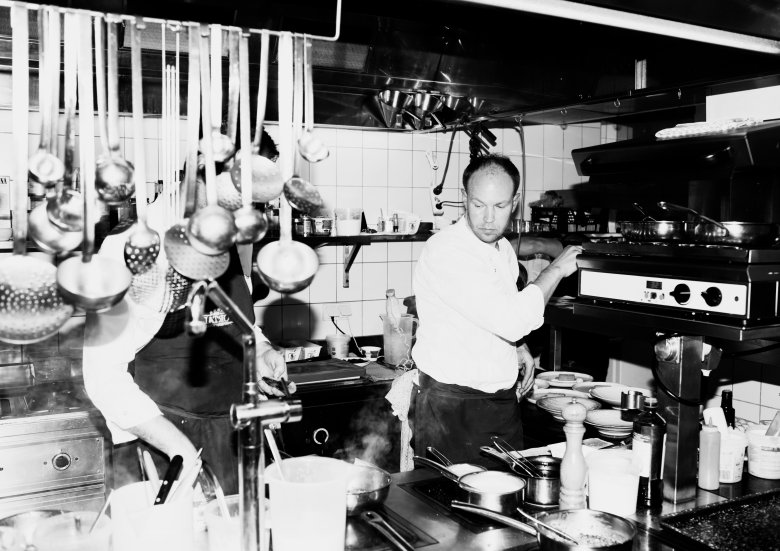
Relax – if you can
Zoom out, over the rolling hills of Kitzbühel, and head west along the Inn Valley to the Paznaun Valley cut deep into the Silvretta Mountains. Our first stop in this rugged landscape is the Trofana Royal. A kind of XXL lounge with the deep carpets and impeccable service that you only get in the finest hotels and restaurants of this world. I immediately feel the need to slip into a pair of leather-soled shoes.
A friendly gentleman with silver-grey hair and a starched chef's jacket is already waiting for us with a bottle of sparkling wine. It is Martin Sieberer, a man who himself made the journey from Kitzbühel – where he grew up – to Ischgl – where he lives today – several decades ago. Since then he has earned himself a reputation as the "godfather of fine dining" in Ischgl. His Paznauner Stube offers classic high cuisine, and he was the first to bring Michelin-standard food to what as once a remote farming village. We have come to dine not at the legendary Paznauner Stube but instead at his other restaurant, the Heimatbühne. "Traditional, regional cuisine with a twist," is how Sieberer describes what awaits us there.

Heimatbühne | Martin Sieberer
Regional dishes by the godfather of fine dining in Ischgl. Winner of our category Best Classic Meal.
The menu takes diners from the summit to the valley with stops in the forest, at the lake and in the pasture. The journey begins with a rucksack full of bread (there really is a small rucksack brought to the table) and several amuse-bouches: cheese soup, Blunznradl (slices of blood sausage), a tiny, deconstructed trio of Tirolean dumplings and a glass bell jar under which trout mousse is live-smoked, resulting in a surprisingly subtle but intriguing aroma. The first candidate for our category Most Original Amuse-Bouche!
"Our focus is on local produce," Sieberer explains between courses. "But not much grows up here." That doesn't mean, of course, that you're allowed to be less creative in the kitchen. On the contrary, as a little intermezzo we get a strong-flavoured apricot sorbet with mint in dry ice smoke, which we are more than happy to nominate for the category Most Impressive Meal.

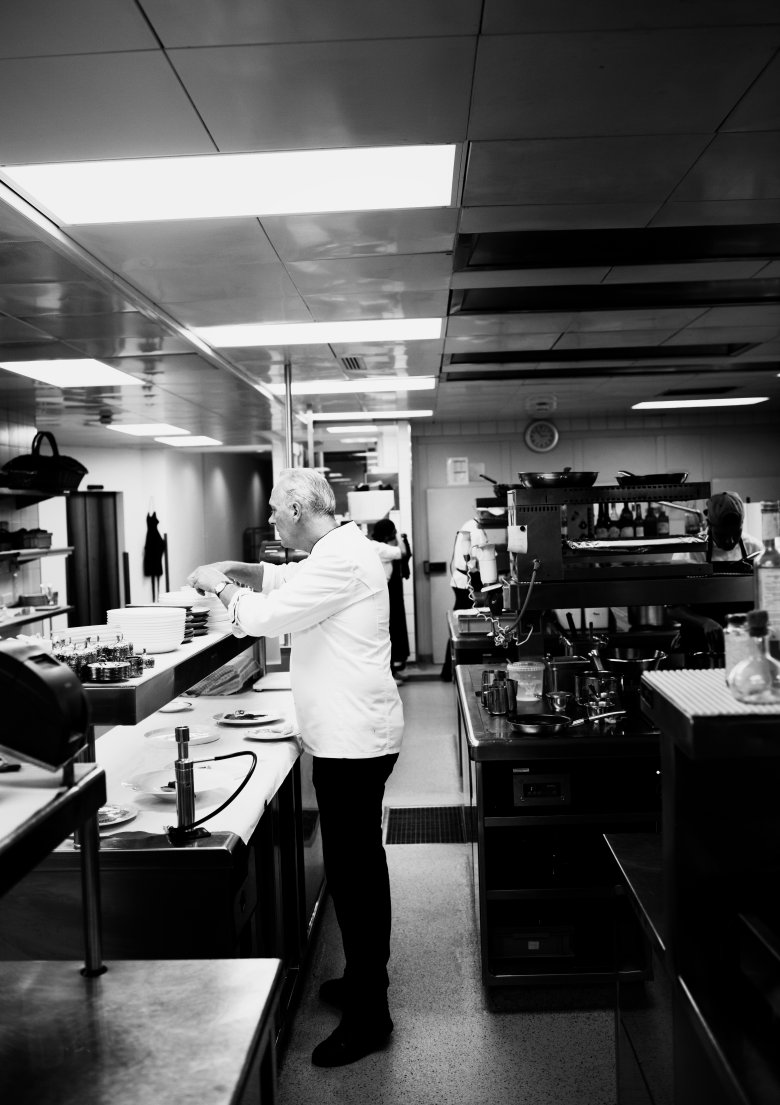

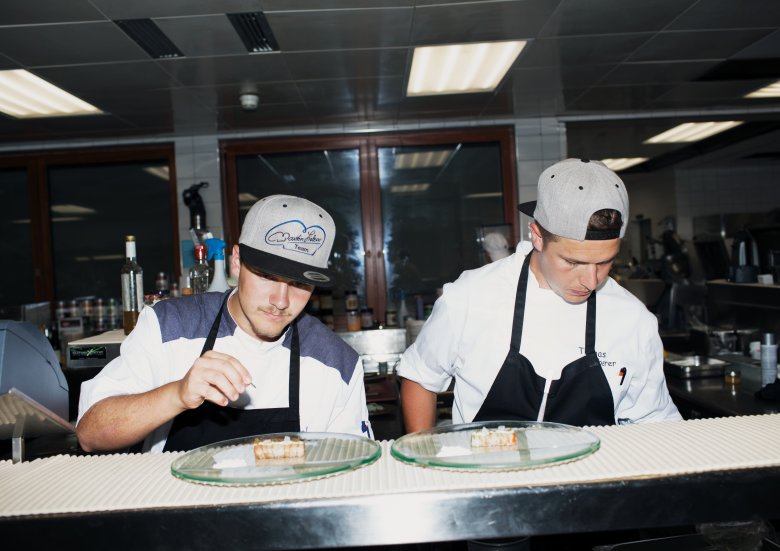
And then, in the middle of this fun menu, two courses of "Zammer Sonntagshendl". First the crispy skin of the chicken served on a hearty fricassee, then a slender strip of breast, cooked sous-vide - a subtle but spectacular dish compared to the rest, but enough to impress any French rotisseur and position Sieberer as a compelling contender for the Best Classic Meal award.
"When you go to Kitzbühel, give Marco Gatterer my best wishes," says Sieberer as we prepare to head off. "He's got a big project with that new restaurant of his."
Venison variations
Traditional Kitzbühel, modern Ischgl? That's certainly the cliché. But is it really that simple? Our next stop is the Berggericht. The name, which literally means "mining court", comes from the medieval townhouse in Kitzbühel where it is located. This building was used centuries ago to settle legal disputes among miners. Today it belongs to a German investor with the eccentric hobby of saving town centres, palaces, castles and vineyards threatened by decay. It also provides a setting for the town's most ambitious culinary project.
"Our goal was to bring old dishes back to life," says Marco Gatterer, a young chef and former student of Martin Sieberer, who developed the menu here. The vast majority of restaurants today, even and especially fine dining ones, like to embrace the traditions of the town or city where they are located. Gatterer's approach is – at least superficially – different. As we enter we are welcomed with a potpourri of small amuse-bouches. One by one they add up to make the "Tyrolean feast" which will be just the first of eight courses. Each of these tiny tapas contains surprising combinations of flavours and textures – lots of contenders for our category Most Original Amuse-Bouche. Parmesan cream with pickled beech mushrooms, salmon tartare on lime macaron with beetroot and horseradish – and a dark brown sphere which releases a perfect taste of venison stew the moment you bite into it. A whole meal in just one mouthful. Amazing.
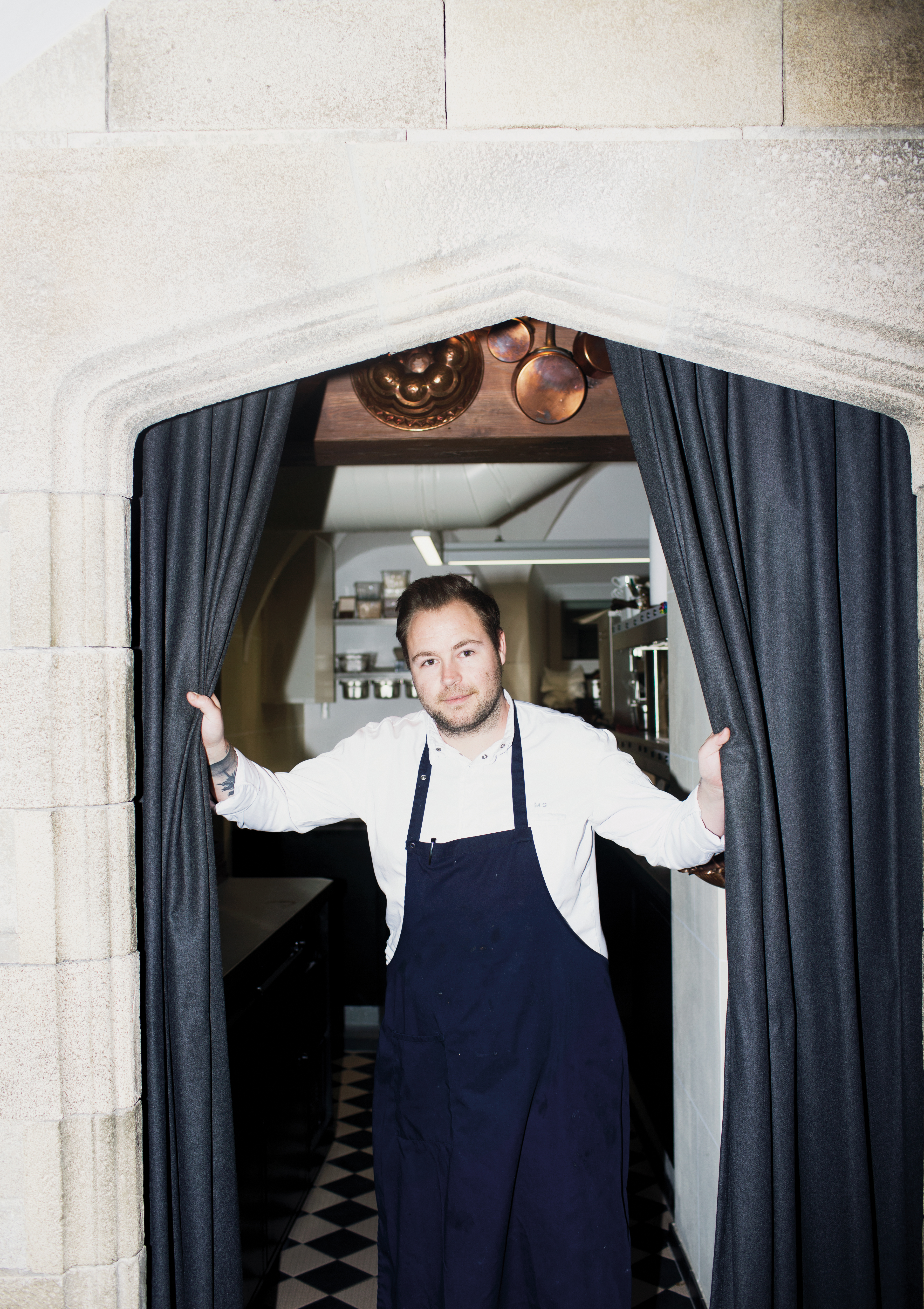
Berggericht | Marco Gatterer
Newcomer to Kitzbühel's fine-dining scene. Winner of our award for Most Original Amuse-Bouche.
The last of the amuse-bouches is an homage to Kitzbühel and its skiing tradition. It is a baked cockscomb, in German "Hahnenkamm". And, as all fans of downhill skiing will know, the Hahnenkamm is the mountain above Kitzbühel where each January the world's best and bravest downhill skiers compete in the toughest and most prestigious race of the season. The rest of the menu also features other references to the local region, for example roast chamois (the German word for a young chamois is Kitz, hence the name Kitzbühel) and a dessert called Kitz Spitz, dedicated to one of the most famous local mountains, the Kitzbüheler Horn. As good as they are, they don't make it onto our shortlist. The other medal candidates from our five-hour marathon are the pike dumpling filled with a lobster bisque and the millefeuille of pork belly with cabbage puree and potato foam. It is a modern version of a dish that has fallen out of fashion called "Wammerl", and definitely has to be in with a chance of a medal in our own little Food Olympics.


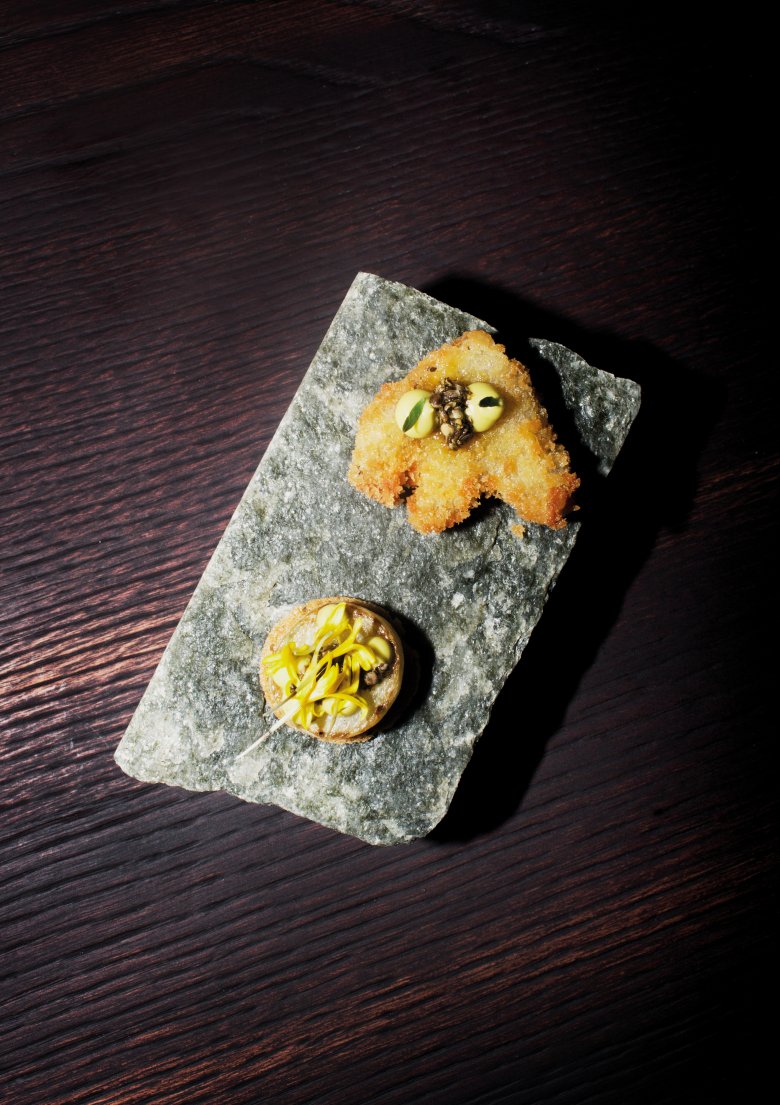
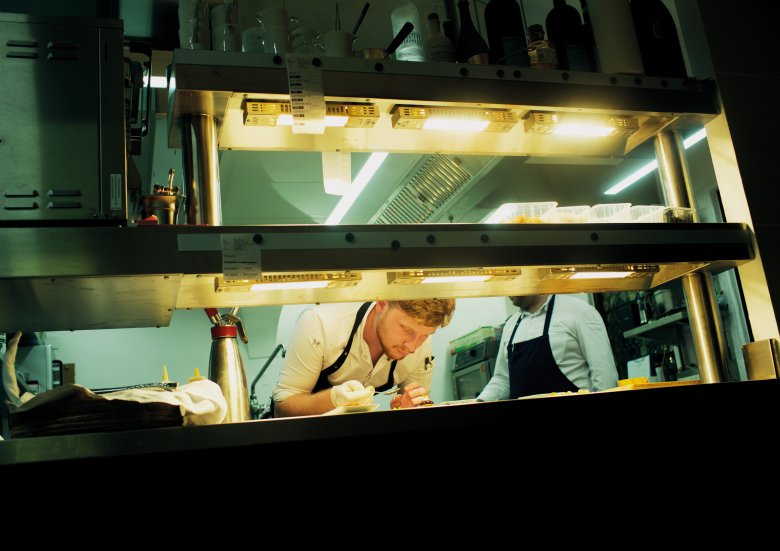
What a dish, what a meal! Innsbruck-born Marco Gatterer is definitely on top form for Team Kitzbühel. Let's see what Ischgl has in response...
The Paznaun Experiment
Back in the far west of Tirol, our first dish of the day is barley risotto.
The parade of amuse bouches and appetizers has already given us an idea of what awaits us – precise mountain cuisine with clever cross-references to international favourites and forgotten local dishes. We have tucked into a bowl of cream soup with spleen slice, a trout mousse on potato blinis, and a chicken liver pâté with sorrel granité – more than a match for any foie gras.
After all that offal and fish, the barley risotto with mushrooms and a hint of spruce-sprig aroma is a real surprise – and definitely our next candidate for Best Old Tirolean Dish. It takes barley, usually considered a side dish to fill you up, and makes it the star of the show in a new and exciting way.
Of all the restaurants in our little competition, Gunther Döberl's Stiar has the most unusual concept. The charismatic man from Linz, who married into an Ischgl family, is the most committed of our candidates to the idea of haute cuisine with a local touch. Saltwater fish, for example, is not used in any of the dishes. The meat comes from the family's own butchery, with almost everything being used from head to tail. Most of the ingredients are pickled, fermented and, in some cases foraged, from the fields and forests around the restaurant: New Alpine instead of New Nordic. Suddenly I find myself eating a meadow-herb-like dandelion – or a waiter will comes over and grate some dried heart onto my food. Döberl explains that this regional approach to cooking is simply common sense: "At the seaside I want to eat food from the sea. In the mountains it's the same, isn't it?"

Stiar | Gunther Döberl
Fine dining with local Ischgl influences. Winner in our category Most Surprising Alpine Variation.
"Local cuisine at fine-dining standards" sounds easy, but it really isn't. We could nominate the whole meal at Stiar for our old Tirolean category, but the rules of the competition dictate that we can and must choose only one dish from each restaurant per category – so we opt for the offal opener in the category Best Amuse-Bouche. In the category Alpine Variation we go for the veal fillet and sweetbreads on truffle jus with celery ravioli – a dish from Tirol with more than a hint of Paris and Emilia-Romagna.


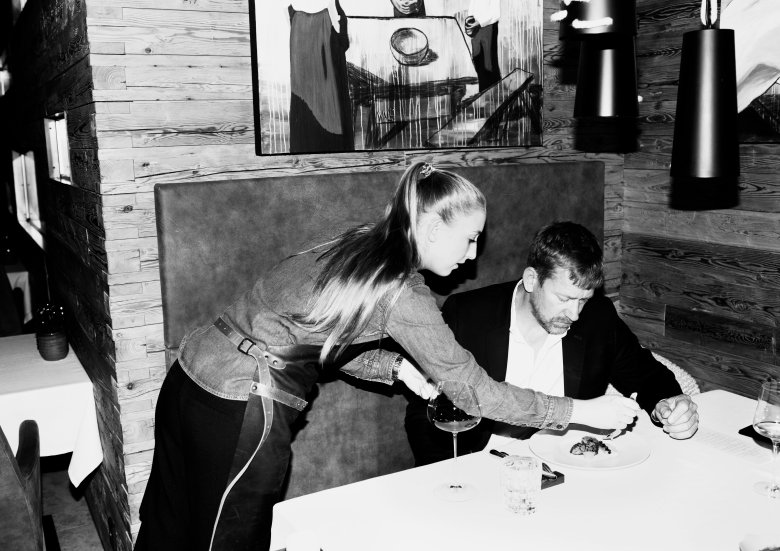
Time for Kitzbühel to respond
So what does Kitzbühel have up its sleeve? To find out we visit Austria's youngest fine-dining chef, a man who has turned his back on "cooking by numbers" as he calls it and now runs several more down-to-earth eateries in and around Kitzbühel including the Neuwirt. The 130-seater restautant is often fully booked – proof for Jürgen Kleinhappl that his choice to move away from Michelin-style cooking was the right one. Instead of a multi-course tasting menu the Neuwirt offers a selection of classics like Wiener Schnitzel and Tafelspitz. There is also space for a few modern dishes such as truffled egg, strongly recommended by Kleinhappl himself when we sit down for a chat. Despite – or maybe even a little because of – its simple concept, the Neuwirt has received rave reviews in top restaurant guides.

Neuwirt | Alexander Knelle
Gourmet eatery with a relaxed atmosphere in the centre of Kitzbühel. Winner of our category King of the Desserts.
The head chef at the Neuwirt is Alexander Knelle and is just 25 years old – a rising star at a young age, like Kleinhappl himself a few years ago. First up is an egg, fresh from the farm, with home-grown herb oil, poached to perfection. In terms of texture and flavour it is is in no way inferior to the "Michelin-style cuisine" at the other restaurants we have visited. Tapioca pearls in spinach are part of the secret, Knelle tells us, and a frozen truffle, that sort of thing. Definitely a contender in our category Most Impressive Dish.
Then comes a plate of "Tafelspitz", a beef classic normally associated with Vienna. We may be several hundred kilometres from Austria's capital, but I can't imagine any chef there making a Tafelspitz better than Knelle – it is cooked to perfection and comes with a subtle selection of side dishes. A real Austrian classic prepared to the highest haute-cuisine standards. The third dish from the Neuwirt to earn a nomination from us is also a classic, but this time of the sweet variety. It is a "Schmarrn", a thick pancake cut up into little pieces and normally served with icing sugar on top and apple sauce on the side – the famous "Kaiserschmarrn" many people will have had here on holiday. The variation here is called "Moosbeerenschmarrn" and is prepared with cranberries. It is a good example of what Kleinhappl means when he says that people come here to Tirol precisely because of the simple dishes. "It's honest cuisine," he says. Who are we to disagree? The Neuwirt is without a doubt the number one address for those foodies in search of a more relaxed dining experience.


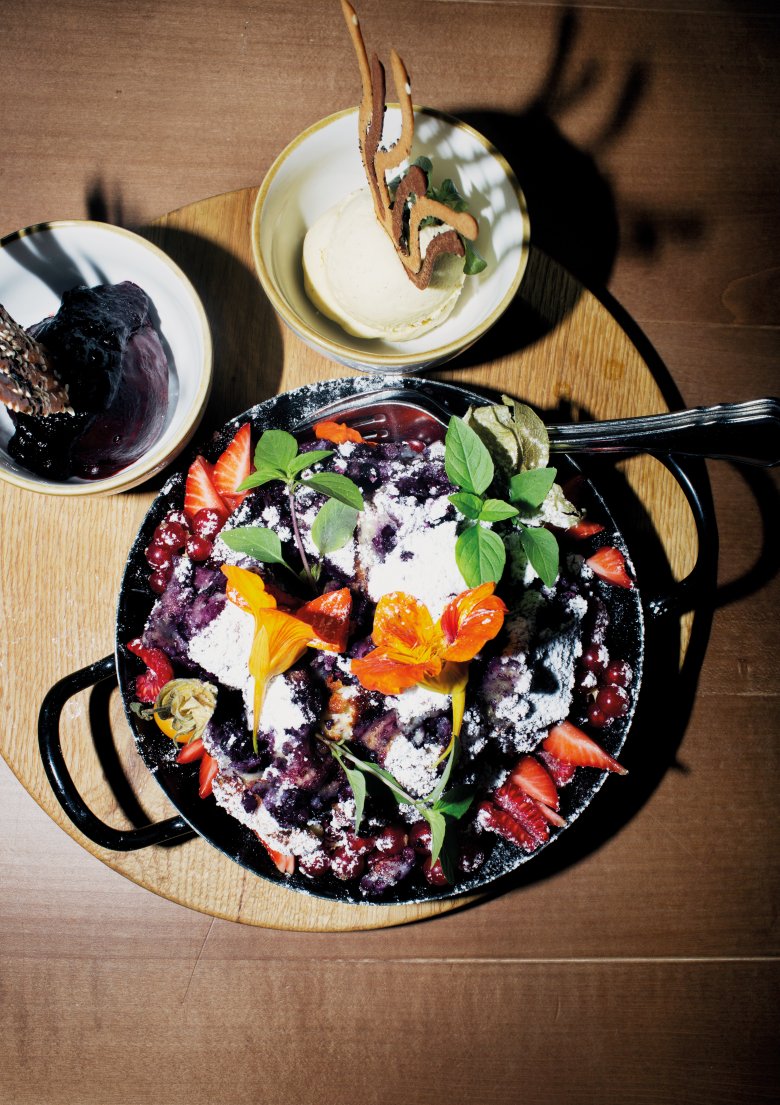
International class
Our final stop in Ischgl is totally different – though Benjamin Parth, too, has moved away from the idea of multi-course tasting menus. Unlike in some of the world's most famous fine-dining locations, you won't find a pair of tweezers in the kitchen here. Parth describes his cooking style at the Stüva, which has been awarded 18.5 out of 20 points by renowned guide Gault Millau, as "purist", adding "guests should recognise what they have on the plate in front of them." Another thing Parth is not really interested in is regionality – he simply wants to use the best ingredients, wherever they come from. When he composes his dishes he wants to be able to play all the notes.

Stüva | Benjamin Parth
This restaurant in Ischgl is officially the best in Tirol. Benjamin Parth's commitment to international haute cuisine wins him our award for Most Impressive Dish.
"Carabinero / Aloe vera / Grapefruit" is one of those triads that qualifies for the Most Impressive Dish based alone on its exotic ingredients – but above all thanks to the fine interplay of just a few components that fuse perfectly with each other: the sweetness of the cold-cooked crustacean, the bitter notes of the coral-coloured fruit slices, the subtle aloe jelly. This, we agree, is how mountain summers in the Paznaun Valley should taste.
If you belong to that dying breed of diners who still want as many courses as possible, Stüva is happy to oblige. On your culinary journey you will encounter scallops and watercress, a truffled langoustine stew, turbot with lemon balm, loup de mer with saffron beurre blanc – it's striking that Parth serves lots fish in summer, very light and elegant. The grande finale is a cascade of desserts, with anything containing wild strawberry absolutely medal-worthy.
However, the course that really blows us away is a small plate that, against all expectations, sneaks into the running for the Best Alpine Dish. It is a piece of char on mashed potatoes surrounded by a light mousse. As soon as the first spoonful hits my palate I am reminded of a very specific taste. It is an evening when a good friend offered me a special schnapps from a small bottle. It is a very rare taste that, unless you happen to grow up in a Tirolean schnapps distillery, you will rarely encounter in your life. It is, I finally realise, the flavour of the yellow gentian flower. I am surprised and delighted to encounter it once again here in this char served by Benjamin Parth – a man for whom, unlike many others, regional produce is not the be-all and end-all. It just goes to show that even with the finest ingredients in the world to choose from, sometimes the best things are right on your doorstep...
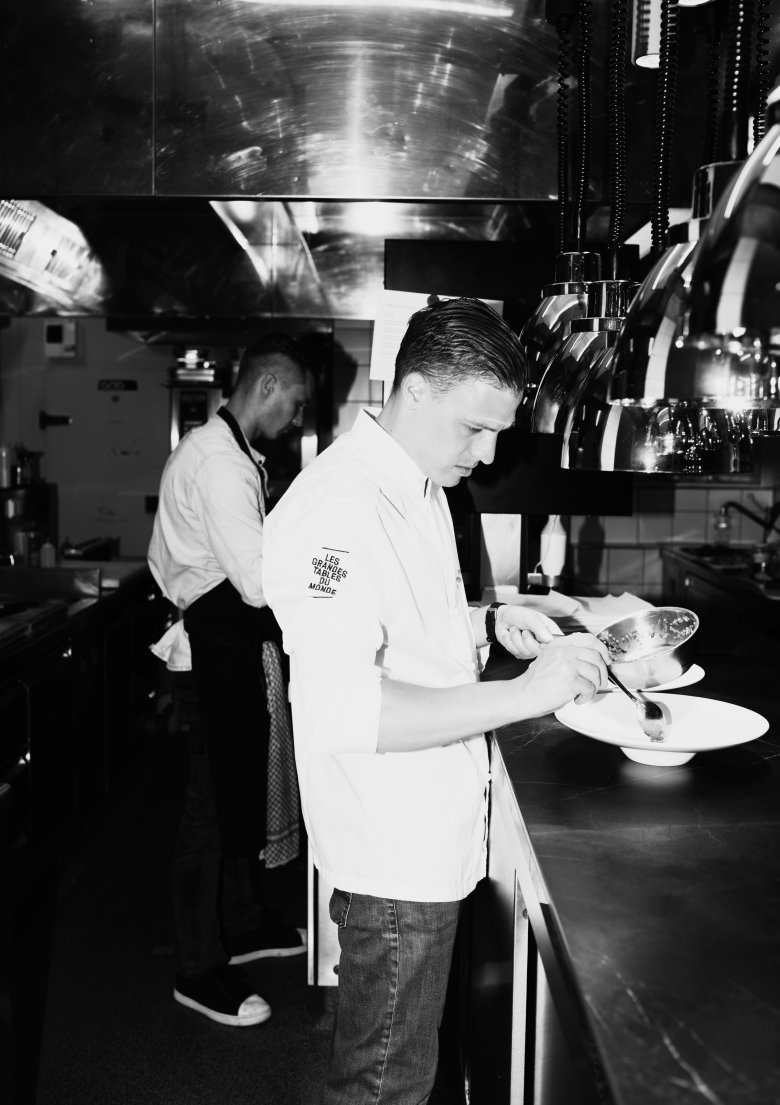
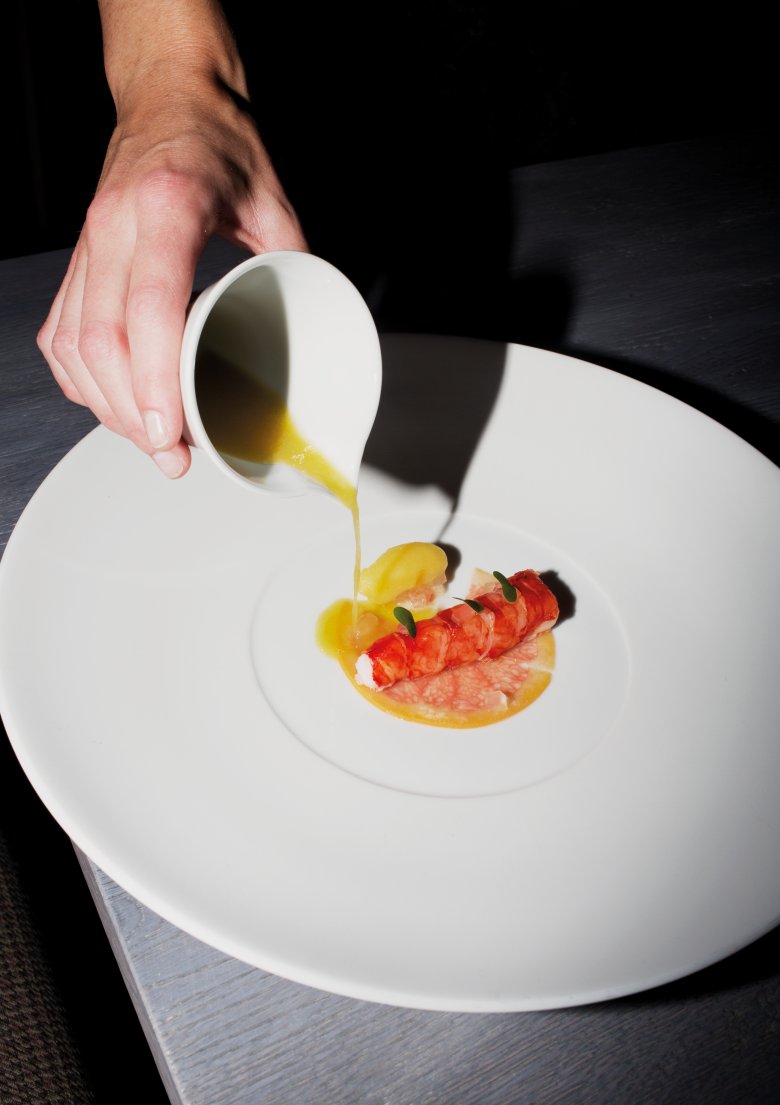

On the gourmet podium
So what about the medals? Which culinary hotspot has come out on top?
In Kitzbühel the spectrum is somewhat broader, while Ischgl covers the extremes. We ended up dividing the medals evenly because each of these great restaurants deserves at least one. The Most Original Amuse-Bouche goes to the Berggericht in Kitzbühel, as does the Best Old Tirolean Dish for the beef soup at the Sportalm. For Ischgl, the Heimatbühne wins the Best Classic Dish with its Sonntagshendl chicken and the Stiar wins the Most Surprising Alpine Variation with its veal. Despite my delight at the enzian-flavoured char, the Stüva wins Most Impressive Dish for its summery carabinero. And, last but certainly not least, the Neuwirt takes home the King of the Desserts for Kitzbühel with its delicious cranberry pancake variation.
It's a draw.









